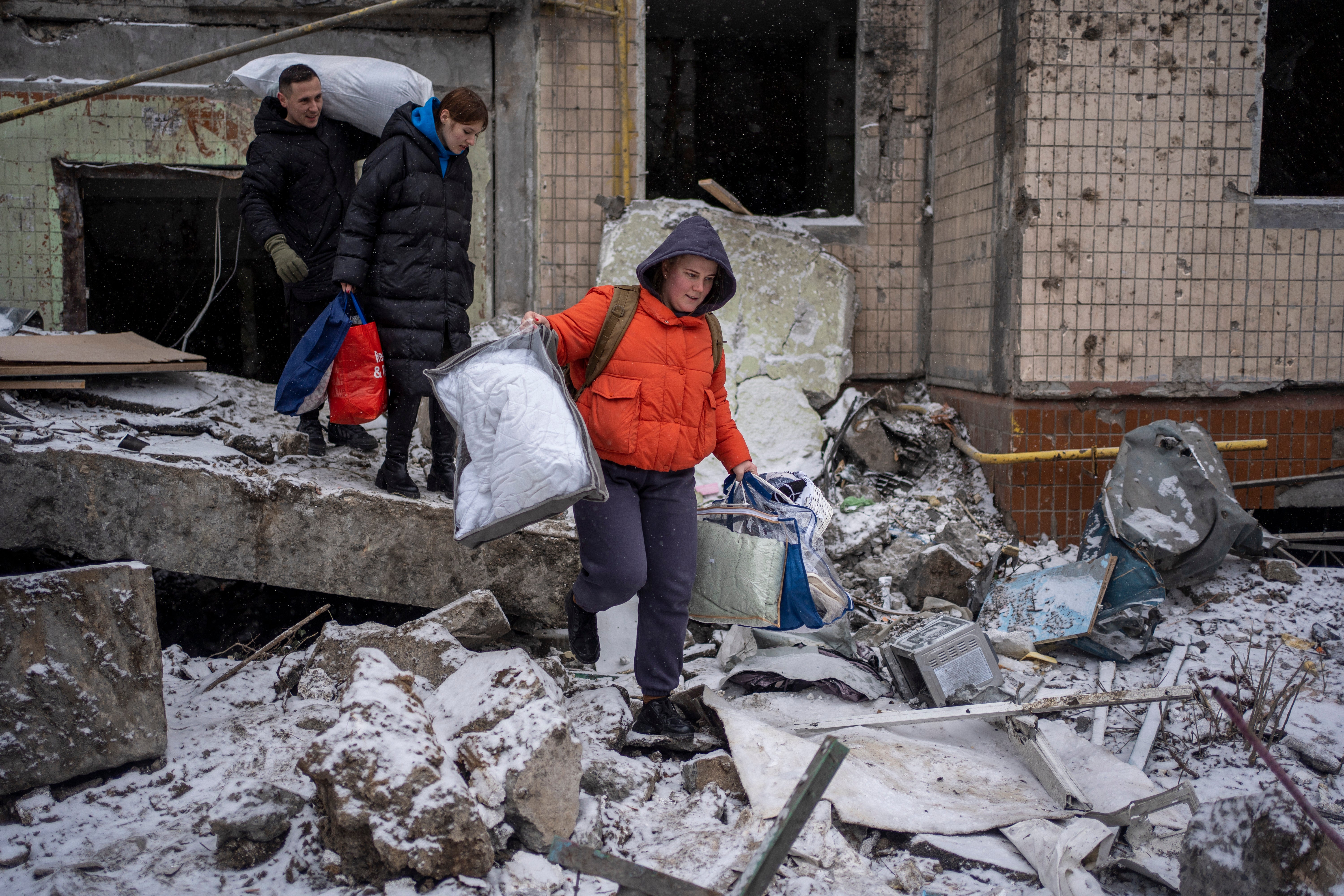Ukraine and Russia fire hundreds of missiles and drones in escalating aerial war
It is likely to become a battle of endurance as Ukraine calls on Western nations to help bulk up their air defence systems
Russia has fired more than 450 missiles and drones at Ukrainian civilian areas over the past week, killing more than 60 civilians and injuring hundreds more. Ukraine has fired dozens of drones and missiles over the Russian border and in Moscow-occupied Crimea in return, as the aerial duel between the two escalates while the frontlines on the ground remain deadlocked.
The British Ministry of Defence (MoD), in its latest intelligence update, suggested that Russia had committed a significant proportion of its stockpiled weapons to carry out the aerial attacks. It added that Russia appears to have transitioned from targeting critical energy infrastructure to Ukraine’s defence industry – seeking to reduce Kyiv’s ability to fire missiles and drones. That is an acknowldgement that the Kremlin is expecting a long war of attrition both in the air and on the ground.
“Russian planners almost certainly recognise the growing importance of relative defence industrial capacity as they prepare for a long war,” the MoD said.
The exponential increase in long-range assaults on Ukraine, much of which has hit the capital of Kyiv, underscores a pressing need for more Western military support at a time when both the US and the European Union have failed to push through additional packages.

On Wednesday, Russia said it shot down 12 missiles fired at one of its southern regions bordering Ukraine, as Kyiv’s forces seek to embarrass the Kremlin and puncture president Vladimir Putin's argument that life is going on as normal despite the 22-month war.
At least 120 towns and cities across Ukraine have been targeted in the last six days, including Kyiv, Kharkiv, the country’s second largest city, which is located in the east, and Odesa and Kherson in the south.
On 28 December, a Russian long-range assault, considered the most aggressive since the beginning of the full-scale invasion in February, kicked off what has since been a brutal war in the sky between the two nations. Russia launched 158 missiles and drones on cities and towns across Ukraine, killing 39 people and injuring a further 159.
Ukraine is said to have fired 45 missiles and drones, as well as an undisclosed number Vampire MLRS rockets since the same date. Russian officials say that the Ukrainian attacks on Belgorod, a region that borders northeast Ukraine, have killed at least 26 people and injured more than 110 since the Russian attack on 28 December.
The most significant attack, the Kremlin claims, happened on 30 December, killing at least 25 people. Another person was allegedly killed on Tuesday.

Mr Putin has claimed that he is “boiling with rage” over the attacks on the border from Ukraine. Meanwhile, Ukrainian officials have accused the Kremlin of deliberately targeting civilians.
Mykhailo Podolyak, one of Ukrainian president Volodymyr Zelensky’s top advisors, wrote on Twitter/X this week: “Russia continues to massively terrorise the centres of large Ukrainian cities with all types of weapons: ballistics, drones, hypersonic, cruise missiles.
“Dozens, hundreds of missiles. Every night. For one purpose only – to kill as many civilians as possible, to terrify them, to drive them underground.”
Nato announced on Wednesday that it would help to buy up to 1,000 Patriot missiles so that allies can better protect their territory as Russia ramps up its air assault on Ukraine.
Nato’s Support and Procurement Agency said it will support a group of nations, including Germany, the Netherlands, Romania and Spain, in buying the Patriots, which are used to defend against cruise and ballistic missiles as well as enemy aircraft.
According to industry sources, the contract could be worth around $5.5bn (£4.3bn). The purchase could help allies free up more of their own defence systems for Ukraine.
“Russian missile and drone attacks on Ukrainian civilians, cities and towns show how important modern air defences are,” Nato secretary general Jens Stoltenberg said in a statement.
“Scaling up ammunition production is key for Ukraine’s security and for ours.”
Despite the aerial warfare, Ukraine and Russia announced their first exchange of prisoners of war for nearly five months on Wednesday, with more than 200 freed by each side after what Moscow said was a complex negotiation involving mediation by the United Arab Emirates.
Russia’s defence ministry said 248 military personnel had been handed over by Ukraine. Kyiv said it had brought home 230 people – 224 soldiers and six civilians – in what it said had been the largest documented swap of troops so far. Ukraine also acknowledged the UAE’s role in the exchange, without giving details.
Kyiv and Moscow have held many prisoner swaps since the early months of Russia’s invasion in February 2022. But the rate of the exchanges dropped in 2023 and the last one took place in early August.
Reuters contributed to this report
Join our commenting forum
Join thought-provoking conversations, follow other Independent readers and see their replies
Comments
Bookmark popover
Removed from bookmarks